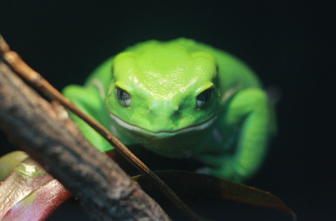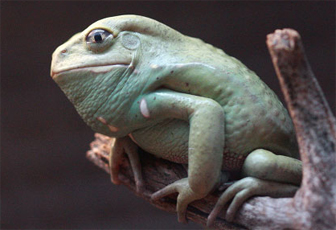More than half of Europe’s amphibians face extinction by 2050
More than half of Europe’s amphibians face extinction by 2050
Jeremy Hance, mongabay.com
September 28, 2008
|
|
Researchers with the Zoological Society of London (ZSL) said over half of European amphibians face extinction in less than fifty years due to a perfect storm of threats: climate change, habitat loss, and disease. The announcement came at an event titled ‘Amphibians in a climate of change’ hosted by Sir. David Attenborough, one of the world’s most well-known wildlife enthusiasts due to his long career making nature documentaries.
"Amphibians are the lifeblood of many environments, playing key roles in the functions of ecosystems, and it is both extraordinary and terrifying that in just a few decades the world could lose half of all these species," Sir David Attenborough told guests. "I am delighted to be working with the Zoological Society of London to promote amphibian conservation, in the hope that we will not be hearing the dying croaks of these amazing creatures in the years to come."
Dr. Trent Garner, a Research Fellow with ZSL, highlighted the effects of disease on amphibians. Ranavirus, which may have come from the U.S., has killed thousands of amphibians in the UK alone, including taking a heavy toll on the native common frog: at least 62,000 individuals of this species succumbed to it in thirteen years. The disease causes skin ulcerations and internal bleeding. Another disease, the chytrid fungus—which has proven a scourge to amphibians worldwide—threatens a number of Mediterranean frog species. The killer fungus appeared in the UK for the first time in 2005.
  Waxy monkey frog |
Researchers also believe climate change will become a major threat to Europe’s amphibians.
"Published projections show that climate change alters amphibians' habitats so we expect a large number of amphibian species to be faced with loss of habitat and ultimately extinction,” Garner said at the event. “In the UK we are already seeing common toads losing condition and experiencing reduced survival. As climate change continues to impact habitats, the situation gets far worse for these native species."
The event was held to raise awareness and funds for ZSL’s EDGE program. EDGE is a unique conservation initiative working to save the world’s most endangered and evolutionarily distinct species. In January, EDGE announced its list of one hundred endangered and unique amphibians worldwide.
“Clearly there is no time to waste if we are to prevent further species loss and effectively conserve unusual, threatened and neglected amphibian species in the wild,” Helen Meredith, the coordinator for EDGE Amphibians, said. “We need to reduce carbon emissions but also address other pressing factors including habitat destruction and spread of disease.”
Worldwide one in three amphibians currently face extinction. In the past twenty years 200 species are known to have gone extinct.
Related articles
Amphibians face mass extinction
(8/11/2008) Amphibians are in big trouble. At least one third of the world’s 6,300 known species are threatened with extinction, while at least 200 species have gone extinct over the past 20 years. Worryingly the outbreak of a deadly fungal disease, chytridiomycosis, is spreading throughout the tropics leaving millions of victims. A new study, published in the early edition of the Proceedings of the National Academy of Sciences, warns that there is “little time to stave off a potential mass extinction” of frogs, salamanders, and caecilians.
Saving forgotten species: An interview with Carly Waterman, Program Coordinator of EDGE
(2/28/2008) In January 2007 a new conservation initiative arrived with an unusual level of media attention. The attention was due to the fact that the organization was doing things differently—very differently. Instead of focusing their efforts on the usual conservation-mascots like the panda or tiger, they introduced the public to long-ignored animals: photos of the impossibly unique aye-aye and a baby slender loris wrapped around a finger appeared in newsprint worldwide. The new initiative EDGE (Evolutionary Distinct and Globally Endangered), launched by the Zoological Society of London, was not concerned with an animal’s perceived popularity, rather the chose their focal species on a combined measurement of a species’ biological uniqueness and its vulnerability to extinction. Consequently, they hoped to make celebrities out of animals (big and small) most people had never heard of: the hairy-eared dwarf lemur, anyone?
As amphibians leap toward extinction, alliance pushes “The Year of the Frog”
(12/31/2007) With amphibians experiencing dramatic die-offs in pristine habitats worldwide, an alliance of zoos, botanical gardens and aquariums has launched a desperate public appeal to raise funds for emergency conservation measures. Scientists say that without quick action, one-third to one-half the world’s frogs, toads, salamanders, newts and caecilians could disappear.